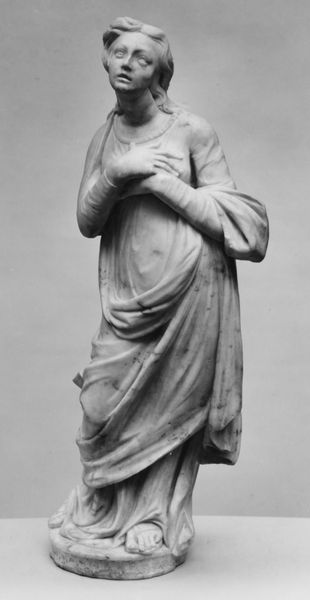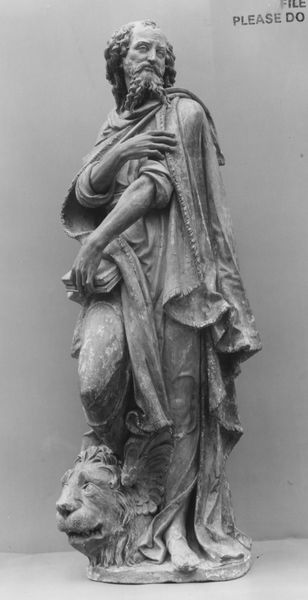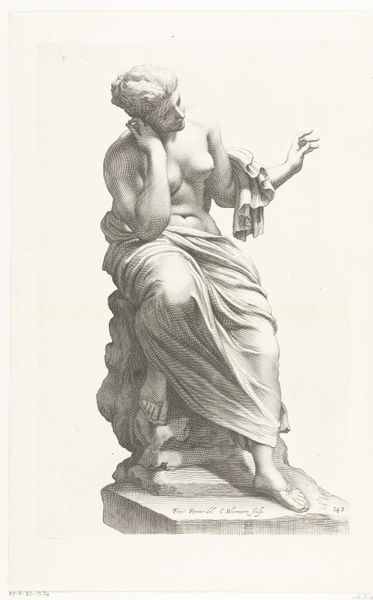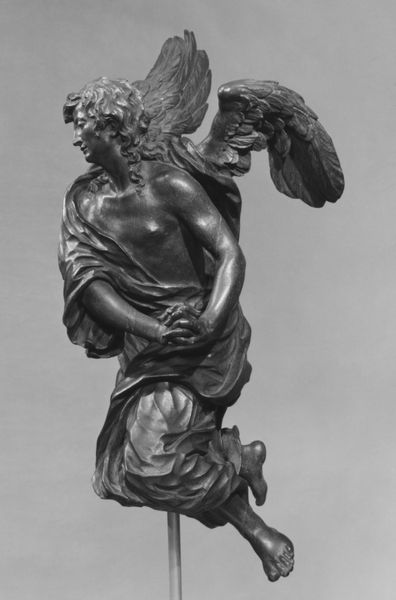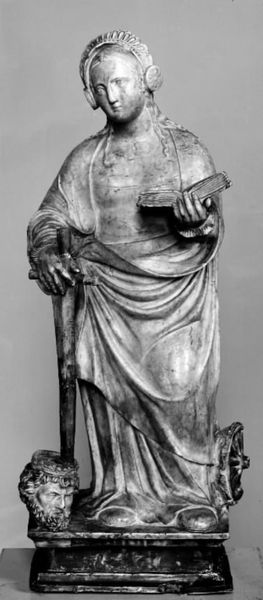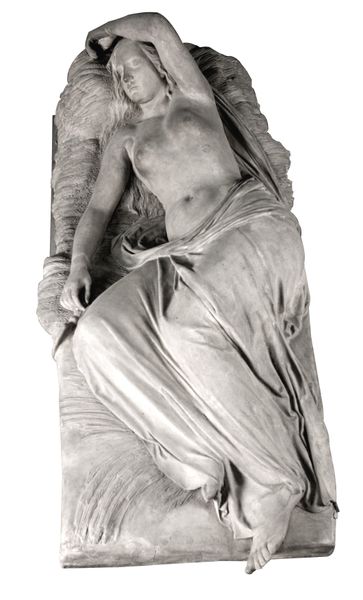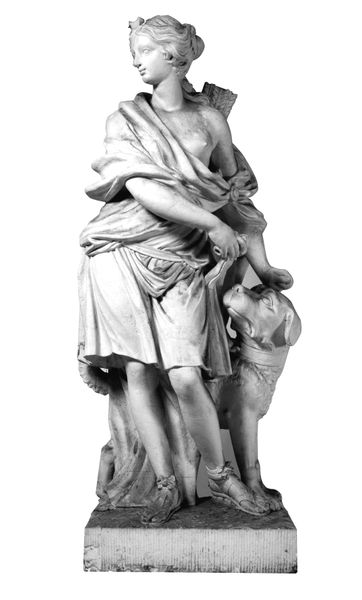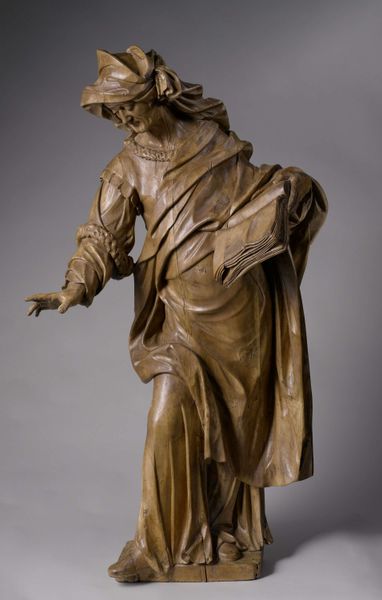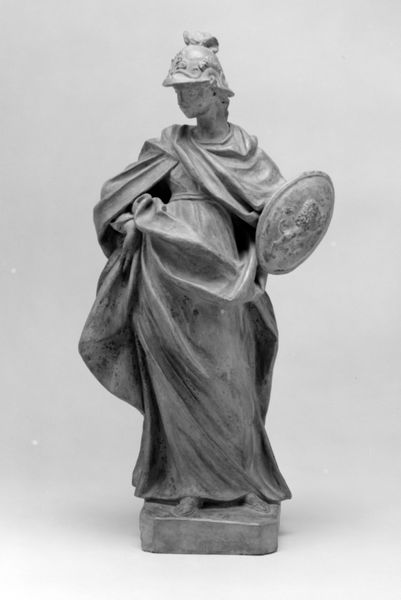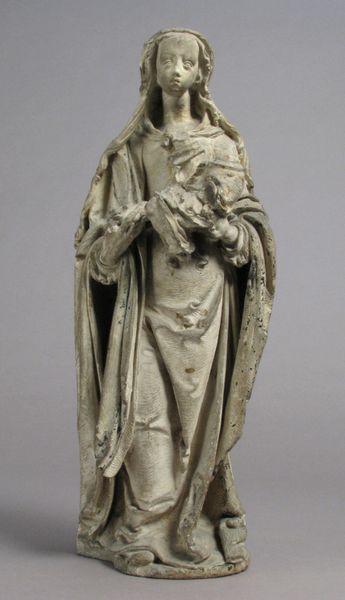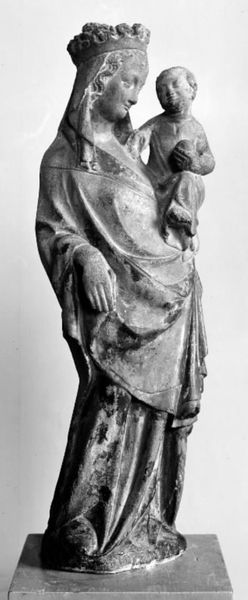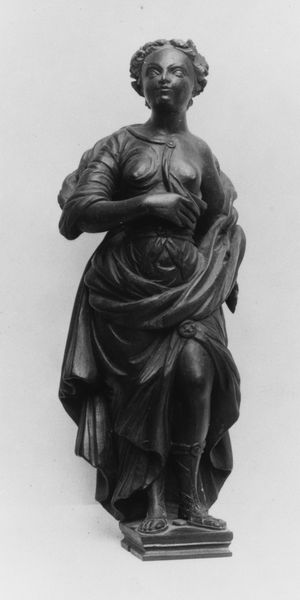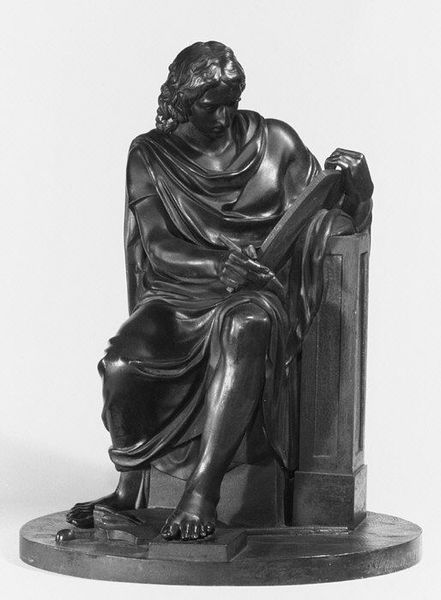
Dimensions: Height: 34 in. (86.4 cm)
Copyright: Public Domain
Curator: We’re now in front of "Saint Bartholomew," a baroque sculpture by Pierre Legros II, thought to have been completed sometime between 1738 and 1799. It is currently held at the Metropolitan Museum of Art. Editor: The work evokes a strong sense of human vulnerability, starkly framed by the unemotional stone from which it’s carved. Curator: Indeed. Observe the contrapposto stance, typical of Baroque sculpture. The dramatic twist of the body, the flowing drapery, all contribute to a sense of dynamism and movement, capturing Bartholomew's emotional and physical state. Editor: I would further argue that the sculpture functions as a commentary on the martyr's lived reality and the complex interactions between power and the human form in religious art. His gaze and exposed flesh elicit questions around power, suffering, and how historical narratives silence lived experiences of bodily trauma. Curator: An astute observation, I would note in relation to form, the sculptor’s mastery is evident in the precise carving of anatomical details. There is great skill involved in shaping the marble, producing detailed musculature and realistic folds in the drapery. What is more, observe how light and shadow play across the surface, adding depth and enhancing the overall impact of the composition. Editor: Legros captures something deeply unnerving by showing Saint Bartholomew holding his flayed skin. Curator: The artist employs dramatic diagonals to direct the viewer's eye, reinforcing Bartholomew's importance. Editor: Through this bold artistic move, Legros presents not just a story of religious sacrifice, but a striking reflection of enduring dialogues regarding what the body is, and what its relationship is with suffering and justice. Curator: I’m particularly captivated by how Legros masterfully embodies emotional turmoil using the tools of baroque sculptural style. Editor: Reflecting on this piece, one cannot ignore how this interpretation reflects shifting beliefs and artistic visions over time.
Comments
No comments
Be the first to comment and join the conversation on the ultimate creative platform.
